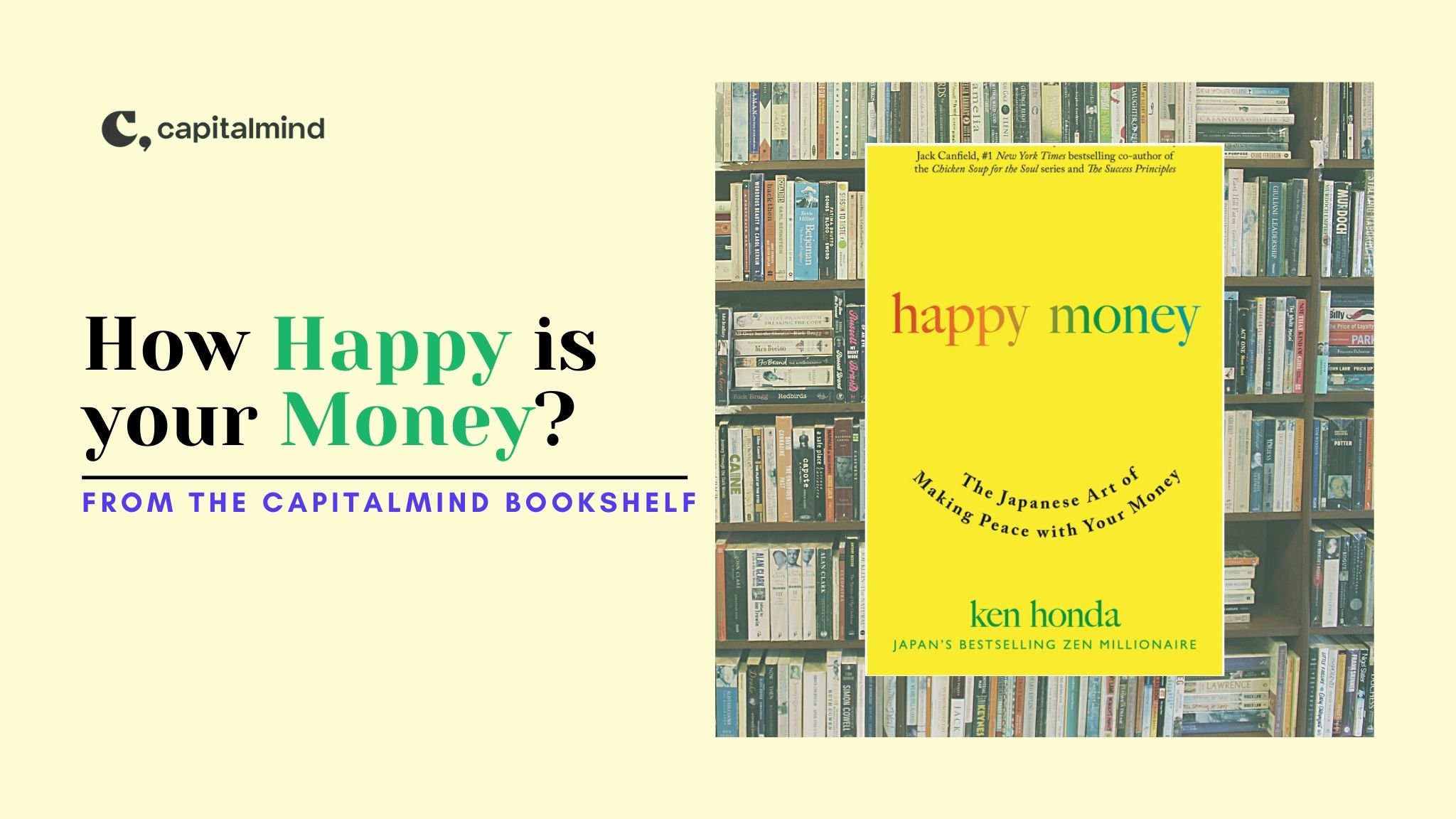This post is about decision-making and a plug for why we think you should subscribe to Capitalmind Premium this Diwali. Do read it with a generous pinch of salt.
Scroll straight to the bottom if you’re only looking for the discount code 😉
Who do you trust to get reliable, unbiased information to make your investment decisions?
From your friendly LIC Agent uncle who paid a visit soon after you got your first job to your Bank RM, unsolicited SMS’s of can’t miss trading ideas, Futures & Options Seminars by folks whose screenshots suggest they are doubling their net worth every third day. Even research platforms like ours, there is no shortage of sources of investment recommendations.
How does a reasonably intelligent person interested in doing the right thing for her financial future decide who’s worth listening to?
After all, the potential costs are not just in the form of a fee, since many sources have nominal or even zero cost, but the substantial opportunity cost of implementing wrong advice and the heartburn that comes with it.
To answer the question about who do you trust, take a moment to consider what makes some advice more valuable than others.
Think of the last time you took advice from someone and implemented it more-or-less without question. This could be a recommendation on whether to watch Dark on Netflix versus Mirzapur Season 2 on Prime Video, or about which refrigerator to buy, or on a more serious note, which specialist to consult when dealing with a family member’s health problem.
What made you go with the advice/suggestion/recommendation?
We might not be able to pinpoint what makes us take some advice and reject others, but here’s a simplified way to understand the process we subconsciously apply:
Credibility
Think of it as the likelihood of correctness
A credible source can show they have thought about the problem deeply enough and has the tools to solve it.
This comes down to demonstrable expertise, and to a lesser extent, credentials.
The graphic below is meant to highlight where some opinions would fall on a sliding credibility scale.
Credibility is context-dependent. A doctor who quickly identifies your runny nose as the common flu based on the dozen similar cases he’s seen in the last week is highly credible. When diagnosing a rare set of symptoms he’s never seen before, that same doctor has slightly lower credibility because she has not seen the same set of symptoms often enough to draw definite conclusions. Remember, she still has higher credibility than the first google search result.
Post-COVID GDP growth forecasts are close to meaningless because the pandemic took what was already a guesstimate exercise and added about 10x uncertainty into it.
But credibility alone is not sufficient. We know this subconsciously.
Trustability
The level of certainty that the advice-giver has your best interests at heart.
Are you aware of the source’s incentives, and are those incentives aligned with what is good for you?
Here are some examples.
 The High-to-Low continuum is obviously not to scale.
The High-to-Low continuum is obviously not to scale.
Your mother’s advice has high trustability. The caller asking for an OTP to unlock your net banking account has inherently low trustability.
Trustability is context-independent. i.e. Someone who scores low in one context is unlikely to score high in another. You will probably not interrupt the scam caller and ask for medical advice.
Notice how high trustability doesn’t necessarily mean the right advice. Just that the source is offering what they believe is the advice best for you.
Your mother might want you to eat more because she believes that’s best for you, but most sedentary folks need to eat less of most things, not more.
Good Decision-making input needs to be credible and trustworthy
You’ve probably noticed the two scales are orthogonal, i.e. just another way of saying they are independent of each other.
Important decisions need to consider at the same time. But that’s not how we usually operate. Sometimes, a high score on one axis overrides an unknown or even a low score on the other.
High-Trustability / Unknown or Low-Credibility: You decide which refrigerator to buy based on a friend’s advice who bought the same one two years ago and has not had problems. You don’t weigh his expertise or your specific requirements and the possibility of other better models available since then. An aunt gives unsolicited advice to get married early, but you wonder how happy her 15-year-old marriage is.
High-Credibility / Unknown or Low Trustability: You stock your cart with items in the health food aisle and count on packaging with big, bold lettering that says “low fat” to mean they’re good for you. A closer examination of ingredients shows that low-fat products tend to have significantly higher sugar or carbohydrate content. Your friendly neighbourhood LIC agent strongly pushes you to buy an endowment policy over a term insurance policy but neglects to tell you that his commission is significantly higher on one versus the other.
A Credibility-Trustability matrix starts to give a better idea of where typical opinions/advice falls and, therefore, where they might go wrong.
The numbers on the boxes are for easy reference. The 1’s (low trust-low credibility) are easy to spot and avoid. Box 4 is where you would want all your key decisions to come from.
But we confuse advice from boxes 2 and 3 for 4.
Notice the solid blue line and the dashed red line. It implies that advice from the same source can move from left to right, not from bottom to top. For example, a friend who gets deeply interested and researches hatchbacks move from box 3 to 4 on that topic. That same friend might be disastrous to turn to for relationship advice, but still a box 3.
LIC Uncle’s advice on anything investment-related will almost always be to maximise his commissions and not what’s right for you. It’s certainly possible that his own understanding of financial instruments might mean he’s in box 1 and not 2, but unlikely that he moves from 2 to 4 at any stage.
Before consuming advice, know where the source of the advice scores on two parameters: Trustability and Credibility
Credibility means knowing how well they understand the specific topic of interest
Trustability means knowing how aligned their incentives are with yours
Now for the plug: Why you should subscribe to Capitalmind Premium this Diwali
Where do we fall on the Credibility / Trustability matrix?
Clearly, that is for Capitalmind subscribers to decide. Investment management is far from an engineering problem with exact answers. We have made and will continue to make our share of mistakes in identifying investment ideas. Our portfolios have and will sometimes underperform the market.
Good investing is so much more than a set of stocks.
In fact, we don’t think having access to even the best active stock portfolio in the world will make you rich.
Don’t get me wrong. The Capitalmind team loves to dive deep to unearth potential winners, be it companies or investment strategies.
Our portfolios have done well over the last year, but then what portfolio has not?
We asked Capitalmind Premium subscribers for feedback on their experience.
Five things we heard from Capitalmind Premium subscribers
1. Likelihood to recommend

Overall, Capitalmind Premium subscribers rated their willingness to recommend us to their friends and colleagues as 8.8 out of a maximum possible 10.
2. How joining Capitalmind has helped
65% of respondents said they found good quality portfolios to invest in. 42% said they have gotten better at asset allocation of their overall portfolio. Other ways members feel their investing has improved are improved financial planning, better managing emotions when investing, investing more systematically, and avoiding financial mistakes.

3. CM Model Portfolios
67% of our subscribers invest in more than 1 Capitalmind Model portfolios

4. Capitalmind Research and Analysis
92% of our subscribers read Capitalmind research and analysis regularly.

5. Community, Portfolios, Learning
Here’s a word cloud of the feedback we got

Of course, it’s not all bouquets. We get our share of brickbats as well, and those become our priorities for improvement. So that each year, we make sure we’re better than the last.
Maybe you started investing recently and want to do it better. Or you have subscribed to other services and felt you need more context on the why and how.
This Diwali, we’re offering new members the opportunity to experience Capitalmind Premium for the first time. For 30% off on the annual plan, get complete access to our premium articles, model portfolios, NIFTY+Futures trend-following strategy, and access to an enriching forum of members consisting of newbie investors and veteran investors.

Use Code DIWALI
30% off to subscribe to the annual premium plan. 20% off on Capitalmind smallcases (CM Momentum and CM Low Volatility). Valid for a limited time
Wishing you and your family a happy, healthy, prosperous and joyful Diwali
🪔🪔🪔






